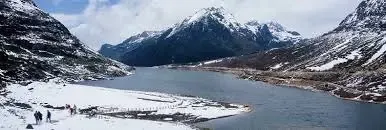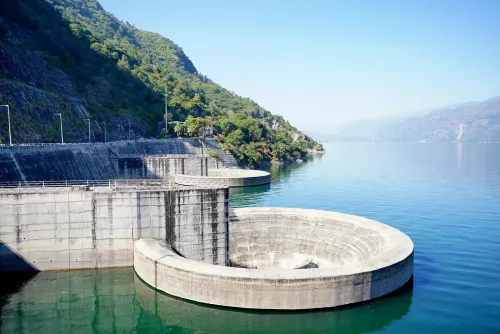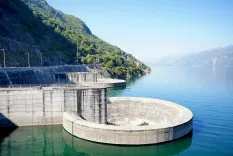Research Highlights Notable Glacier Decline in Arunachal Pradesh Over 32 Years

Synopsis
Key Takeaways
- Significant Glacier Retreat: Documented decline of 756 to 646 glaciers from 1988 to 2020.
- Impact on Water Resources: Potential future water shortages for communities relying on glacial meltwater.
- Climate Change Evidence: Adds to the understanding of climate impacts on the Eastern Himalayas.
- Need for Monitoring: Calls for ongoing research and better adaptation strategies.
- Risk of Glacial Lakes: Highlights dangers of sudden floods from glacial lake outbursts.
Itanagar/Guwahati, Feb 19 (NationPress) A team of researchers from Nagaland University and Cotton University in Guwahati has revealed a significant decline in glacier size in Arunachal Pradesh during the last thirty years, experts reported on Wednesday.
The Himalayas, often referred to as the ‘Third Pole’, house the largest number of glaciers outside the polar regions.
These glaciers are crucial as a fresh water source for over 1.3 billion people living downstream.
The swift retreat of glaciers in recent years has prompted serious worries regarding long-term water supply and ecological stability.
The research was spearheaded by Latonglila Jamir from Nagaland University along with Nabajit Hazarika from Cotton University, including research scholars Vimha Ritse and Amenuo Susan Kulnu from Nagaland University.
This study has been published in a respected, peer-reviewed journal.
The results contribute to the mounting evidence of climate change impacting the Eastern Himalayas.
Expounding on this research, Jamir, Associate Professor from the Department of Environmental Science at the Lumami Campus, Nagaland University, noted: “The study utilized Remote Sensing (RS) and Geographic Information Systems (GIS) to assess glacier changes in Arunachal Pradesh from 1988 to 2020. Most glaciers in this area are located between 4,500 and 4,800 meters above sea level.”
“Our findings indicate a significant decline in glacier area. In 1988, there were 756 glaciers covering approximately 585.23 square kilometers. By 2020, this number had diminished to 646, with the total area contracting to 275.38 square kilometers,” Jamir stated, referencing the study.
The researchers calculated an average glacier loss of 16.94 square kilometers per year.
Additionally, smaller glaciers (less than 5 square kilometers) were observed to be retreating at a quicker pace.
He elaborated, “The ramifications of glacier retreat are not confined to the immediate vicinity. Communities reliant on glacial meltwater for agriculture and drinking water may encounter future water shortages. Initially, melting glaciers could lead to flooding and unstable river conditions, but eventually, decreased glacial mass will result in diminished water availability.
“The emergence and growth of glacial lakes also present dangers, as abrupt floods resulting from glacial lake outburst events can be catastrophic.”
Despite the alarm over glacier retreat, studies focusing on the Eastern Himalayas remain scarce.
This research enhances the understanding of how glaciers in this area are transforming and the implications for future water accessibility.
The researchers underscore the necessity for ongoing monitoring and enhanced climate adaptation strategies to effectively manage water resources in the region.
As climate change continues to alter the Himalayas, studies like this one offer critical data that can aid governments in making informed decisions on water management and disaster preparedness.









